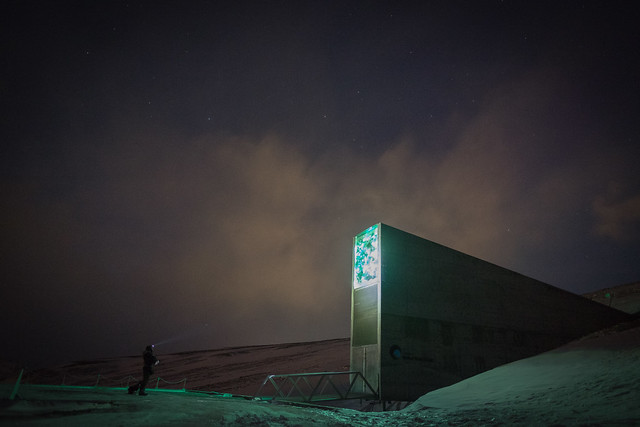The digital iteration of the project is The Specters of Svalbard – a procedural film dealing with materialities surrounding Svalbard’s Global Seed Vault, its tensions with the climate crisis and its potential for fabulatory storytelling. The SGSV hosts around 4.5 million seeds sent by gene banks from all over the world. It is a repository of agricultural and biodiversity in a highly secured facility under the permafrost. For us, a seed is a tendency, as the basic unit of the physical anarchive, a more-than-human texture. That is why we do not propose the use of a traditional script. The enabling constraints (seeds) are a condition for the success of the project. Constraints differentiate improvisation from fabulation. An anarchival film does not rely on a form. It seeks to build or restore fabulatory forgotten cartographies, inspired by Deborah Stratman’s film The Illinois Parables (2016). The research fabulates on decolonised cartographies of Svalbard, problematizing colonisation beyond human warfare, but as the anthropogenic process of occupying Earth in a unique place (Svalbard is of the few places on Earth with no previous known human settlement before Europeans arrived).
The Seed Vault is a media archive in the Derridean concept, containing traces of potentiality (seeds). But, for the archive to activate its potentiality, it needs to be anarchived. In 2017, due to the permafrost melting, the access tunnels to the Seed Vault flooded. Hoaxes about damaged seeds circulated, a fact later denied. Which elements, textures, and tonalities can fuel fabulation way past Svalbard’s genuine fear of the end of this world? The vault is an archive populated with ghosts of future environmental changes. One presupposes that anthropocentric measures will save the world’s biodiversity, but we must think beyond human lifespan on Earth and “anthropocentric exceptionalism” (Braidotti, 2016). The melting of the ice sheets brings spectral qualities of other times. Dealing with its materiality, we ask: what sounds, and textures does this ice-melting platform deploy? How can we attune to velocities that may persist beyond our lifespan? Specifically, we chose Svalbard as one of the sources of the digital seeds because it is where anthropocentric-caused decay can be visible and sensed through its materialities, and where lies an architectonical expression of the human neurotypical archive fever.
The digital counterpart of the anarchive consists of pedagogical experiments with anarchival seeds (images, sounds). In July 2020, we will travel to the surroundings of the Seed Vault in Longyearbyen. This layer of the project is not a translation of the material practices into the film, but a transduction. Preliminary research with pedagogical video-editing and autistic people or not has shown that experimenting with materialities in non-typical or queer ways are disruptive and unsilence non-verbal communication. Douglas et al. discuss experiences with their multimedia project Restorying Autism: on how understanding “‘queer’ as orientation in Ahmed’s (2006) phenomenological and perceptive sense, as a different ‘slant’ on how we might relate to objects, bodily comportment and desire, and unravel the tacit normative and moral assumptions caught up in their histories and practices” (2019, p. 10).
A pedagogy of the media that conceives the world as an archive is urgent. Anarchiving is caring with the world and environmental awareness to non-human ecologies. It reactivates materials from previous artistic processes and obsolete devices. As opposed to sorting materials according to their nobility, what interests us is how they activate a reorientation of the space. The assemblage’s basic unit is the tendency. We look for material assemblages that non-normatively reorient perception and movement: corners, hiding places, displaced furniture.
We will take measures of environmental care and slow travel, which means the planning for each trip will be done with several months of antecedence. We will avoid transport by air. The same logic applies to the events we chose to present our research processes. We will either attend to conferences in Northern Europe or digitally by videoconferences if the distance exceeds a feasible train ride.
